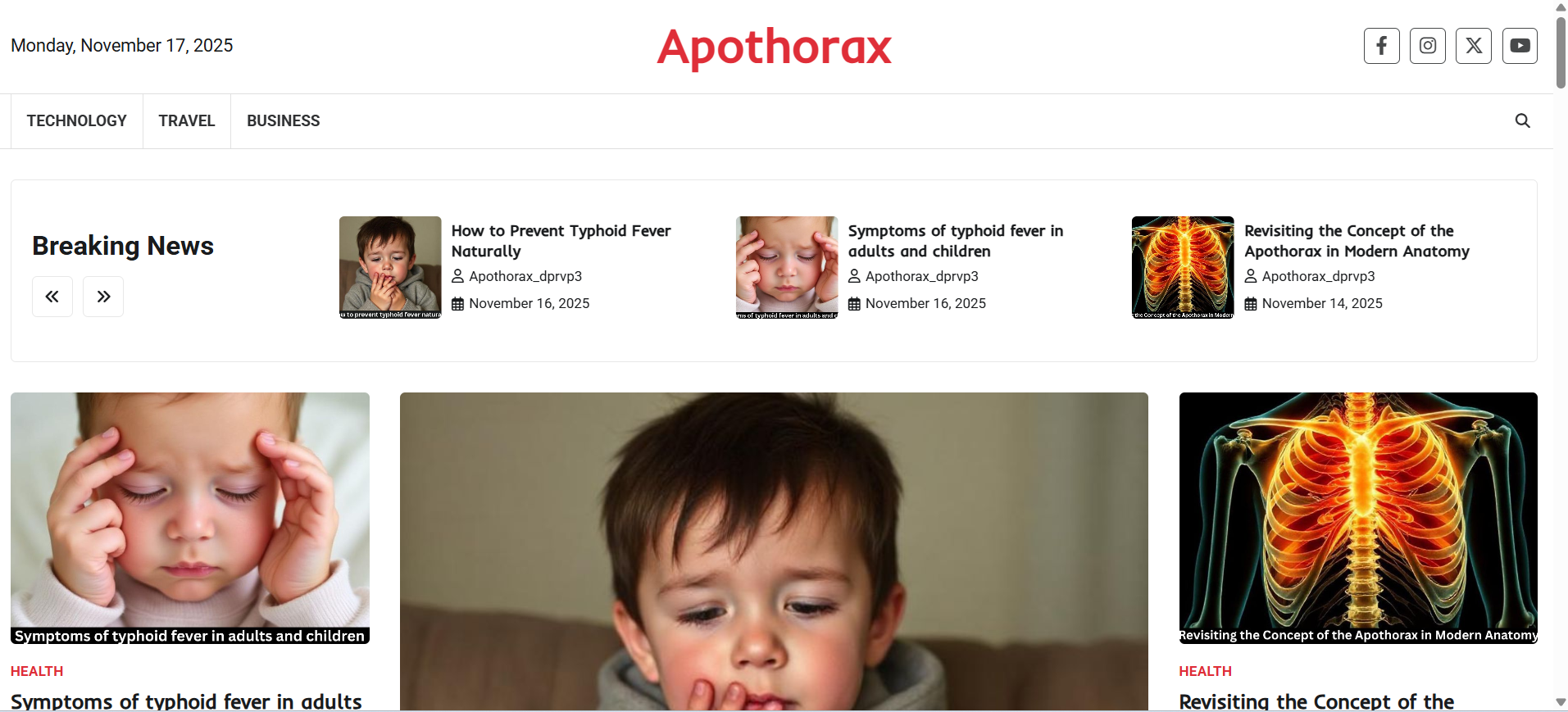If you’re exploring anatomy beyond the basics, the term “apothorax” might catch your attention. While it’s used most often in human anatomical descriptions, it also raises interesting questions in the world of comparative anatomy—especially when we begin comparing humans with creatures like insects. This article takes you through everything you need to know, from definitions to cross-species differences, in a simple and engaging way.
Why the Apothorax Is a Fascinating Anatomical Topic
It involves the heart, lungs, and critical circulatory pathways—basically the “central engine room” of the human body.
How Understanding It Helps Students Across Biology Levels
Whether you’re preparing for board exams, NEET, zoology courses, or advanced anatomy, knowing how thoracic regions differ across species deepens your biological understanding.
What Is the Apothorax?
Basic Definition
The apothorax is the upper region of the thorax in humans, located above the diaphragm and enclosed within the ribcage.
Origin of the Term
It comes from terminology used in classical and regional anatomy, though some modern textbooks don’t highlight it.
Why It’s Not Common in All Textbooks
Many anatomy books avoid subdividing the thorax unless the curriculum specifically requires it.
Apothorax in Human Anatomy
Exact Locatio
Found in the central chest region, above the diaphragm.
Boundaries
- Superior: Below the neck
- Inferior: Diaphragm
- Lateral: Ribcage
Functions in Humans
Respiratory Role
Allows lungs to expand for gas exchange.
Circulatory Role
Houses the heart and major vessels that distribute blood throughout the body.
Key Organs in the Human Apothorax
Heart
Located slightly left of the midline.
Chambers and Function
- Two atria
- Two ventricles
- Pumps blood to lungs and body
Lungs
Main respiratory organs.
Gas Exchange Mechanisms
Oxygen enters the blood through alveoli while carbon dioxide exits.
Major Vessels
Crucial highways for blood flow.
Aorta, Vena Cava, Pulmonary Trunk
Each plays a vital role in circulation.
Comparative Anatomy – What Does “Apothorax” Mean in Other Animals?
Similarities Across Species
Most vertebrates have a thoracic region housing heart and lungs.
Why Humans and Insects Can’t Have the Same Apothorax
The term apothorax is specific to vertebrate anatomy, not invertebrates.
Thoracic Region in Insects
Insect Thorax Explained
Insects have a three-part thorax, each section supporting movement structures.
Prothorax
Supports the front legs.
Mesothorax
Supports the second pair of legs and often the forewings.
Metathorax
Supports the hind legs and hind wings.
Role of the Insect Thorax in Movement
It’s the locomotion powerhouse—controlling walking, running, jumping, and flying.
Do Insects Have an “Apothorax”?
Why the Term Doesn’t Apply
Insects don’t have lungs, ribs, or a diaphragm—so they cannot have a human-like apothorax.
What Anatomical Region Functions Similarly
Insects rely on spiracles and tracheal tubes for respiration.
Insect Respiratory System (Spiracles & Tracheae)
Air enters through spiracles and travels directly to tissues, without blood involvement.
Comparing Human Apothorax and Insect Thorax
Structural Differences
- Humans: Bone-protected, organ-filled space.
- Insects: Segmented, exoskeleton-covered movement region.
Functional Differences
- Humans: Breathing + circulation.
- Insects: Movement + tracheal breathing.
Evolutionary Adaptations
Each evolved based on mobility, oxygen needs, and habitat demands.
Table Comparison
| Feature | Human Apothorax | Insect Thorax |
|---|---|---|
| Respiratory organs | Lungs | Tracheae, spiracles |
| Support | Ribcage | Exoskeleton |
| Function | Breathing + circulation | Movement + respiration |
| Segments | Not segmented | 3 segments |
How Vertebrates Differ in Their Thoracic Sections
Birds
Air Sacs and Flight Adaptations
Lightweight bones and high-efficiency breathing.
Mammals
Ribcage Variations
Different species have different rib counts and diaphragm shapes.
Reptiles
Breathing Mechanics
Some use ribs for breathing instead of a diaphragm.
Significance of the Apothorax in Evolution
Protective Function
Ribcage evolved to protect vital organs.
Organ Efficiency
Grouping heart and lungs enhances energy use.
Structural Support
Maximizes mobility without risking vital organs.
Apothorax in Medical and Biological Studies
Importance for Students
Helps understand respiratory and circulatory systems.
Why Comparisons Improve Understanding
Comparative anatomy reveals functional adaptations across species.
Research Significance
Useful in biology, medical science, zoology, and evolutionary studies.
Common Misunderstandings About the Apothorax
Not a Separate Cavity
It’s part of the thorax, not a second chest.
Not Found in All Species
Only applies to vertebrates.
Not the Same as Insect Thorax
These structures are functionally and structurally different.
Summary of Comparative Insights
- Humans have an apothorax; insects don’t.
- Insects rely on thoracic segments and tracheae.
- Birds, mammals, and reptiles show thoracic variations.
- Understanding apothorax helps clarify vertebrate anatomy.
Conclusion
The apothorax may not be a universal term across textbooks, but it plays a crucial role in understanding human thoracic anatomy. When compared with insects and other animals, it shows how evolutionary paths diverged to create unique respiratory and circulatory systems. Whether you’re a student, educator, or anatomy enthusiast, exploring the apothorax across species deepens your appreciation for biological diversity.
FAQs
1. Do insects have an apothorax like humans?
No, insects have a segmented thorax but no apothorax.
2. Why is the human apothorax important?
It houses the heart, lungs, and major vessels.
3. What region in insects works like the apothorax?
The tracheal system handles respiration, not a thoracic cavity.
4. Do birds have an apothorax?
They have thoracic regions but with unique air sac systems.
5. Is the apothorax a separate cavity?
No, it’s a region within the thorax.

